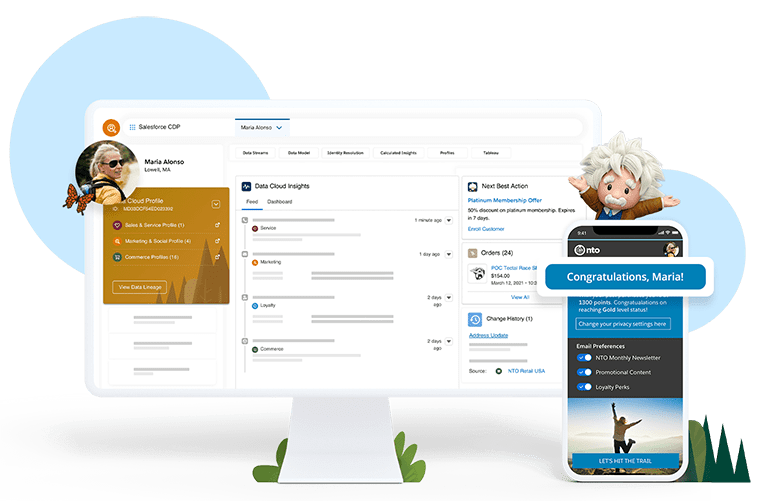In the fast-paced world of B2B marketing, where competition is fierce and attention spans are short, the art of storytelling has emerged as a powerful tool to captivate audiences and drive meaningful engagement.
In this blog post, we delve into the story of Barbara, a determined B2B entrepreneur who faced a sudden and unexpected challenge.
Through her journey, we uncover valuable insights about the importance of storytelling in B2B content marketing services and how it can transform the way businesses connect with their target audience.
- Understanding the Role of Storytelling in B2B Content
- How Barbara’s Story Unfolded
- The Transformation Through Storytelling
- The Elements of Effective B2B Storytelling
- Applying Storytelling Techniques to B2B Content
- Leveraging Storytelling Across Different Content Formats
- Measuring the Impact of Storytelling in B2B Content
- Addressing Common Barriers to Storytelling in B2B
- The Evolving Landscape of B2B Content Marketing
- Final Thoughts on B2B Content Marketing Services and Brand Storytelling
Understanding the Role of Storytelling in B2B Content
Storytelling in B2B is more than just spinning a narrative. It involves strategically using narratives, anecdotes, and emotions to convey a brand’s message, values, and purpose.
It goes beyond the product or service, aiming to establish a genuine connection with the audience by engaging their emotions.
In the past, B2B marketing primarily relied on a transactional approach, focusing on product features and benefits. However, as consumers increasingly crave authentic and meaningful connections, storytelling has emerged as a powerful alternative.
By shifting from a purely transactional mindset to one that emphasizes building relationships and connecting on a deeper level, businesses can differentiate themselves and create lasting impressions.
In the B2B landscape, where decisions are often driven by logic and data, storytelling might seem out of place.
However, stories have a unique ability to engage the human side of decision-makers and buyers.
When done right, storytelling can evoke emotions, build trust, and inspire action. It helps B2B brands break through the noise, leaving a lasting impact on their target audience.
That said, let’s see what happened in Barbara’s story.
How Barbara’s Story Unfolded
Barbara, a passionate entrepreneur, embarked on her journey in the competitive B2B industry. A B2B software industry, specifically focusing on project management software.
Armed with innovative solutions and a drive to make a difference, she launched her company with high hopes and dreams of success.
However, as Barbara navigated the complex landscape of B2B marketing, she encountered an unforeseen challenge that threatened to derail her progress.
A sudden shift in market dynamics, coupled with intensified competition, left Barbara scrambling to find her footing and connect with her target audience effectively.
Barbara initially relied on traditional marketing approaches, focusing on her software’s features and technical specifications.
But, she soon realized that her target audience, comprising busy professionals, was inundated with similar messages.
Her efforts to stand out and create meaningful connections fell short, leaving her feeling frustrated and disheartened.
The Transformation Through Storytelling
Barbara knew she needed to rethink her approach. She realized that her audience, like any other, craved human connection and emotional resonance.
To rise above the competition, Barbara recognized the power of storytelling and its potential to capture attention and foster engagement.
With renewed determination, Barbara immersed herself in the art of storytelling.
She studied successful brands and campaigns that utilized storytelling to connect with their audiences.
She selected Slack, Salesforce, and Mailchimp and analyzed their stories.
I’ll tell you only one; salesforce.
Salesforce

Salesforce tells the story of empowering businesses to build stronger customer relationships.
They focus on the journey of businesses that face challenges in managing customer data, tracking sales pipelines, and providing exceptional customer service.
Salesforce presents itself as the platform that streamlines these processes, enabling businesses to deliver personalized experiences and drive growth.
Through storytelling, Salesforce effectively communicated the value of its CRM software.
By highlighting relatable customer challenges and showcasing success stories of businesses that achieved significant growth using their platform, Salesforce established credibility and positioned itself as the trusted partner for customer relationship management.
Mailchimp and Slack have similar stories.
In each story, these B2B brands used storytelling to connect with their audience, convey the challenges their customers faced, and position their software as the solution.
By presenting relatable narratives, they established emotional connections, built trust, and showcased the transformative impact their products could have on businesses.
Barbara has finally found the missing piece of the puzzle.
Through research and experimentation, she developed a deep understanding of the mechanics of compelling storytelling and its potential to transform her business.
Barbara set out to craft a brand narrative that would resonate with her target audience. She delved into the essence of her company, identifying core values, mission, and vision.
Drawing inspiration from her own experiences and those of her customers, she weaved a story that showcased the human side of her brand and the positive impact it could make.
The Elements of Effective B2B Storytelling
Effective B2B storytelling comprises several key elements that work together to create a compelling narrative. These elements include relatable characters, engaging conflicts, authentic resolutions, and emotional resonance.
By carefully crafting these elements, you can create stories that resonate with your audience and leave a lasting impact.
To make a story relatable and engaging, it’s crucial to develop characters that resonate with the audience.
In B2B storytelling, these characters can be based on real customers or representatives of the target audience. By showcasing your customer’s challenges, successes, and growth, you can humanize your brand and make a deeper connection with your audience.
Every captivating story needs conflict and resolution. In the B2B context, the conflict can stem from challenges faced by customers, industry disruptions, or even internal struggles.
Present these conflicts and showcase how the brand helps overcome them. This approach can create a sense of urgency, empathy, and the desire for a resolution from your audience. Another key aspect of a great story is authenticity.
Your audience can quickly sense when a story is contrived or lacks genuineness. By sharing real stories and experiences, you can establish trust and credibility with your audience.
Relatability plays a significant role here, as the audience should be able to see themselves or their challenges reflected in the story.
Humans are emotional beings, and B2B decision-makers are no exception. Stories that evoke emotions have a higher chance of resonating and influencing decision-making.
Tapping into emotions such as joy, empathy, inspiration, or even fear can create a deeper connection with your audience and inspire them to take action. Let’s see how you can implement these storytelling techniques in your writing.
Applying Storytelling Techniques to B2B Content
A brand story is the foundation of effective B2B storytelling. It should encompass the brand’s mission, values, and unique selling proposition. By crafting a cohesive and compelling narrative, you can create an emotional bond with your audience, differentiate yourself from competitors, and drive brand loyalty.
Your website and landing pages serve as the digital storefront of your brand. When you incorporate storytelling techniques in website copy, you can make a memorable first impression, engage visitors, and guide them through a compelling narrative that leads to conversions.
Let’s say you don’t have a story to tell yet about your brand. In that case, your customer’s stories can be a valuable asset to leverage.
Case studies are an invaluable tool in B2B marketing. Do you have satisfied customers? What challenges did they have? How did your product or service help them overcome their challenge? How have they benefited? What positive results do they have now?
You can transform customer stories into interesting narratives that’ll capture new audiences and demonstrate the value of your solutions.
Transforming dry, data-driven case studies into engaging stories, you can provide real-world examples of how your products or services can address customer challenges. These kinds of stories will give your brand a more substantial boost and drive more traffic to your business.
Leveraging Storytelling Across Different Content Formats
With the newfound knowledge of using storytelling in B2B content, let’s see the various content and ways to incorporate stories into them.
Storytelling in Blog Posts and Articles
Blogs and articles present an excellent opportunity for businesses to share stories that educate, entertain, and engage their target audience. By utilizing storytelling techniques in these content formats, you can create a narrative flow that keeps readers hooked and encourages them to explore further.
Video Marketing: Telling Stories Through Visuals
Videos have become a dominant force in content marketing, offering a dynamic and engaging storytelling medium. You can combine visuals, video, and audio narratives to create compelling content that resonates with your audience, leave a lasting impression, and increase brand recall.
Create an Immersive Experience with Podcasts and Audio Content
Podcasts and audio content provide a unique opportunity to create immersive storytelling experiences. Through engaging narratives, interviews, and conversations with influencers and other thought leaders in the industry, you can establish yourself as a reliable source of information, entertain your audience, and foster a sense of community.
Infographics and Visual Storytelling
Infographics offer a visually appealing way to communicate complex information and data. By incorporating storytelling elements into infographics, businesses can present information in a narrative format, making it more accessible, engaging, and memorable.
Measuring the Impact of Storytelling in B2B Content
Measuring the impact of storytelling in B2B content requires identifying relevant key performance indicators (KPIs).
These can include metrics such as engagement rate, time spent on the page, conversion rate, brand sentiment, and customer retention. By tracking these KPIs, you can gauge the effectiveness of your storytelling efforts and make data-driven optimizations.
Aside from the specific KPIs, you should track various other metrics to assess the effectiveness of their storytelling efforts. These can include website analytics, social media metrics, email open and click-through rates, and customer feedback.
By monitoring these metrics, you can gain valuable insights into how your story resonates with the audience and make iterative improvements.
Examining case studies of successful storytelling campaigns can provide valuable inspiration and insights. Analyze how other businesses have leveraged storytelling to achieve their goals and learn from their strategies, techniques, and results.
Granted, you’ll face a few challenges when you try turning your brand into an exciting narrative. When that happens, what will you do?
Addressing Common Barriers to Storytelling in B2B
Storytelling has great potential in B2B marketing, but it also comes with some challenges. One challenge is that B2B audiences are often seen as purely logical and not influenced by emotions.
Another challenge is that organizations may resist making changes to embrace storytelling. And it’s crucial for sales and marketing teams to work together and be on the same page. By facing these challenges directly, businesses can clear the path for successful storytelling efforts.
Resistance to storytelling can stem from various factors, including a focus on ROI, skepticism about its effectiveness, or a lack of understanding of its potential impact.
But, by educating stakeholders, sharing success stories, and showcasing the research behind storytelling’s effectiveness, you can overcome resistance and gain buy-in from key decision-makers.
Remember, incorporating storytelling into B2B content requires a thoughtful and strategic approach. Understand your target audience and their pain points, conduct customer interviews, use storytelling frameworks such as the hero’s journey, and iterate based on feedback and data.
By following these tips, businesses can create authentic and impactful storytelling campaigns.
The Evolving Landscape of B2B Content Marketing
The B2B content marketing landscape is continually evolving, influenced by changes in technology, consumer behavior, and market dynamics.
As businesses adapt to new trends and technologies, B2B content marketing services that’ll play a vital role in connecting with audiences and differentiating brands.
These days, Artificial intelligence (AI) and automation have the potential to revolutionize storytelling in B2B marketing.
From personalized content recommendations to chatbots and virtual assistants, these technologies can enhance the delivery and customization of storytelling experiences, making them more relevant and impactful.
Looking ahead, the future of storytelling in B2B holds exciting possibilities. With advancements in virtual reality (VR), augmented reality (AR), and interactive content, businesses can create immersive storytelling experiences that transport the audience into their brand’s world.
Integrating storytelling with emerging technologies such as voice assistants and smart devices will further enhance the reach and impact of B2B content marketing.
Final Thoughts on B2B Content Marketing Services and Brand Storytelling
Barbara’s journey highlights the transformative power of storytelling in B2B content. By understanding the role of storytelling, businesses can connect with their audience on a deeper level, differentiate themselves from competitors, and inspire action.
From crafting compelling narratives to leveraging various content formats, businesses can harness the art of storytelling to create memorable brand experiences and drive meaningful results.
As the leading agency in Orange County, Flying V Group is dedicated to propelling your brand to new heights.
Our expert content creators have an unmatched ability to use storytelling techniques to craft compelling and tailored content that captivates your audience, driving engagement and improving conversions.
As B2B marketers, let us embrace storytelling and unlock its immense potential in our content strategies.






0 Comments